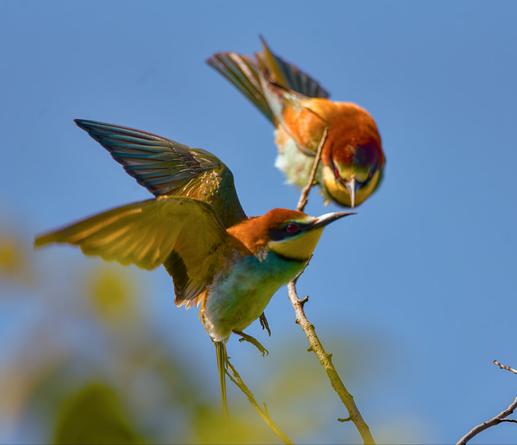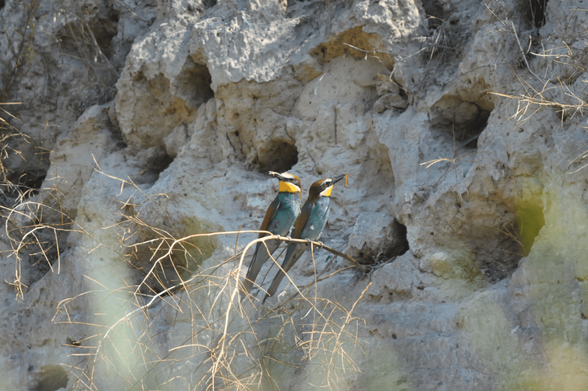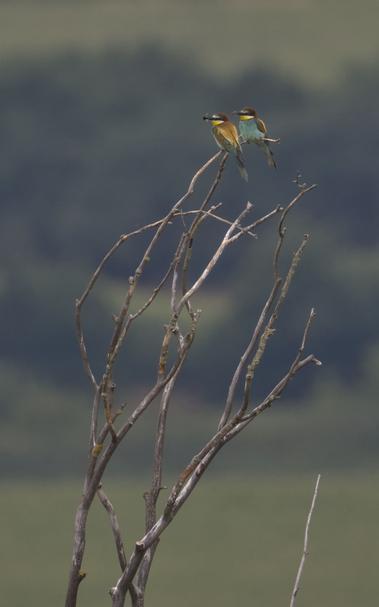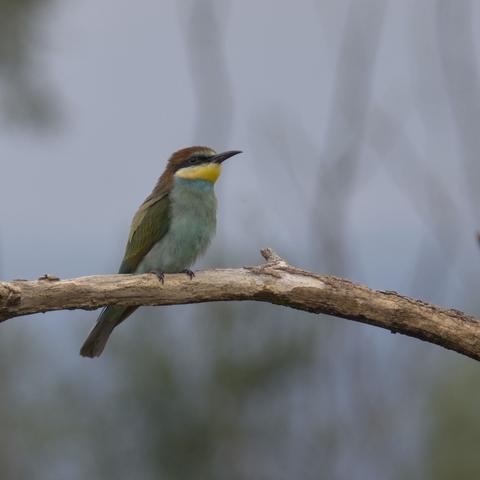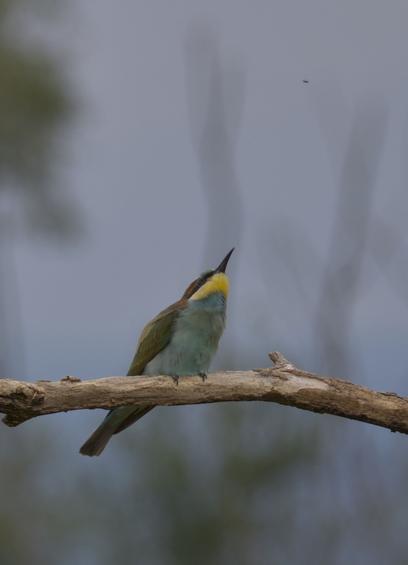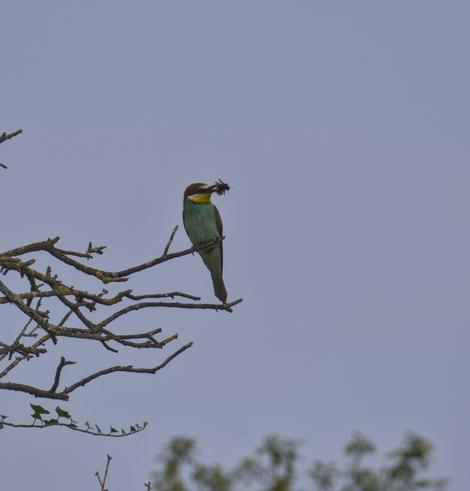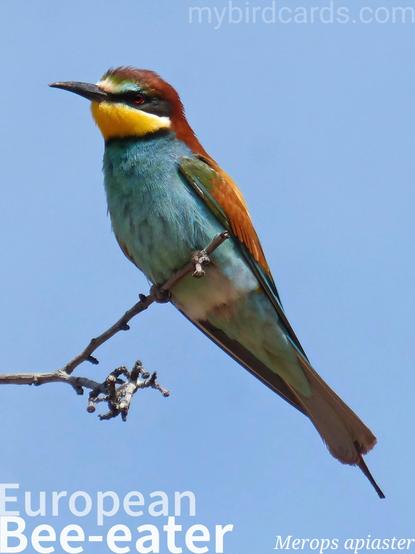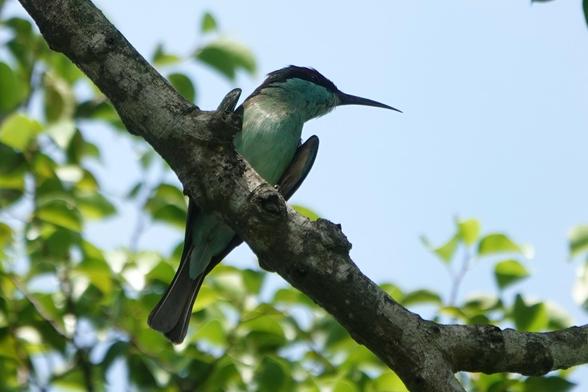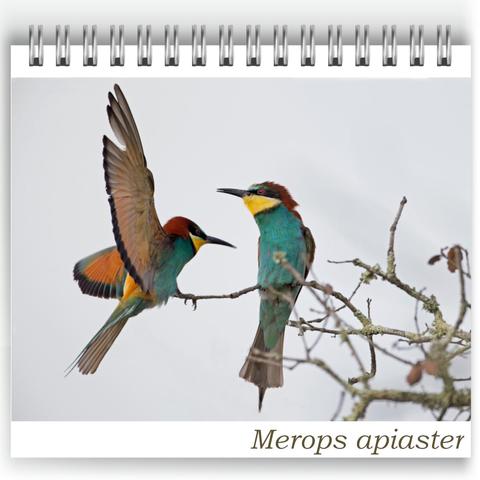#Beeeaters
#Bienenfresser #Vögel #Naturfotografie #Wildlife #Tierwelt #Farbenpracht #Sommerstimmung #Himmel
Two vibrantly colored bee-eaters are captured in a lively moment. The bird in front perches delicately on a thin branch, while the second hovers above with its wings spread wide. Sunlight enhances the vivid greens, yellows, blues, and rusty tones of their plumage. The clear blue sky and softly blurred greenery in the foreground create a bright, summery atmosphere full of life.
#BeeEaters #birds #NaturePhotography #Wildlife #Colorful #SummerVibes # Sky #NatureScene
It's been a while since I took my 400mm out for a spin. I finally gave it to Nikon to get it cleaned and serviced yesterday. Can't wait to take pictures with a non-moldy lens haha!
#birds #bird #birdwatching #birding #birdingpics #birdingphotography #birdphotography #birdphoto #birdphotos #dailybirdpix #birdpics #beeeater #beeeaters #cute #cutebirds #cutebird #wildlife #wildlifephotography #animal #animals #cuteanimals #cuteanimalshot #wildlifepicture #wildlifepics
#nikon #nikonphotography #nikonphoto #nikond90 #nikon400mm
🌍 European bee-eater (Merops apiaster) #EurasianBirds #EuropeanBirds #AsianBirds #AfricanBirds | #EuropeanBeeEater #MeropsApiaster | #BeeEaters #BeeEaterFamily 📷: Photo by makamuki0🦜 #birdsoftheworld #birds
#Biodiversity #BirdWatching #ConnectWithNature #CampingInPortugal #bbcamping #SustainableTourism #BeeEaters #Camping #Nature #Birds
🌏 Rainbow bee-eater (Merops ornatus) #AustralasianBirds #AustralianBirds #AsianBirds | #RainbowBeeEater #MeropsOrnatus | #BeeEaters #BeeEaterFamily 📷: Photo by Kanenori🦜 #birdsoftheworld #birds
A Blue-throated Bee-Eater (Merops viridis) spotted at Bidadari Park, Singapore on 25 Dec 2024. Bee-Eaters have a distinctive profile when in-flight, gracefully swooping to grab their meals while flying.
On iNaturalist [ https://www.inaturalist.org/observations/256155540 ].
#iNaturalist #Nature #Photography #Singapore #Birds #Aves #BeeEaters #Meropidae
The European bee-eaters are back in the skies! These beautiful birds have already arrived, adding bursts of colour and sound to our landscape as they hunt insects mid-air and raise their youngs in sandy riverbanks. A beautiful sign of the season’s turn—and a reminder of the richness of our biodiversity.
#biodiversity #birdwatching #connectwithnature #campinginportugal #bbcamping #sustainabletourism #beeeaters #camping #nature
Kingfisher & blue-tailed bee-eaters - Sri Lanka
https://linktr.ee/vickyoutenphoto
#photography #wildlife #wildlifephotography #nature #naturephotography
#Mastodonnaturecommunity #ukwildlife #kingfisher #beeeaters
Thanks for your support!
🌏 Asian green bee-eater (Merops orientalis) #AsianBirds | #AsianGreenBeeEater #LittleGreenBeeEater | #BeeEaters #BeeEaterFamily 📷: Photo by MOHANN🦜 #birdsoftheworld #birds
🌍 White-fronted bee-eater (Merops bullockoides) #AfricanBirds | #WhiteFrontedBeeEater | #BeeEaters #BeeEaterFamily 📷: Photo by Nel_Botha🦜 #birdsoftheworld #birds
🌍 Northern carmine bee-eater (Merops nubicus) #Africanbirds | #NorthernCarmineBeeEater #CarmineBeeEater #BeeEaters | #birds🦜 #birdsoftheworld
"I got your six'. That's what I imagine these two bee eaters are saying to one another. See more here: https://fineartamerica.com/featured/two-bee-eaters-tanzania-africa-joan-carroll.html #birds #birdphotography #beeeaters #africa #tanzania #animalphotography #naturephotography #nature #travel #travelphotography #BuyIntoArt #AYearForArt #TheArtDistrict #giftideas @joancarroll
Bee-eaters make historic return to breeding site in Norfolk
It’s definitely European Bee-eater time here in The #Straits now as we are among the peak of their #Spring #migration
It’s impossible not to notice them noisily navigating the divide here between Africa and Europe and they are seemingly everywhere ! 😊
Gwybedogion y gwenyn
Bee eaters
GameNight😎
Who didn't play #Connect4 or #ConnectFour ? Well, I did and as you can see I won.. 4 beautiful #BeeEaters in a row.
#birdsinlatin #MeropsApiaster
#Birdphotography #Birds #Birdsofthefediverse
#BirdsofMastodon #Wildlife #Wildlifephotography #Nature
Bee Eaters in #ModderfonteinReserve #SouthAfrica
#Birds #Beeeaters
Bedtime it is already. Hope you all had a great and colorful day...
These #BeeEaters at least did 😜
#birds #photography
#BirdsInLatin #MeropsApiaster
Happy to spot several Blue-throated Bee-Eaters (Merops viridis) perched on a tree and hunting for food near my workplace this morning in Singapore. Saw them taking off to acrobatically grab insects in mid-air.
On iNaturalist [ https://www.inaturalist.org/observations/37222443 ].
#iNaturalist #Nature #Photography #Singapore #Birds #Aves #BeeEaters #Meropidae
